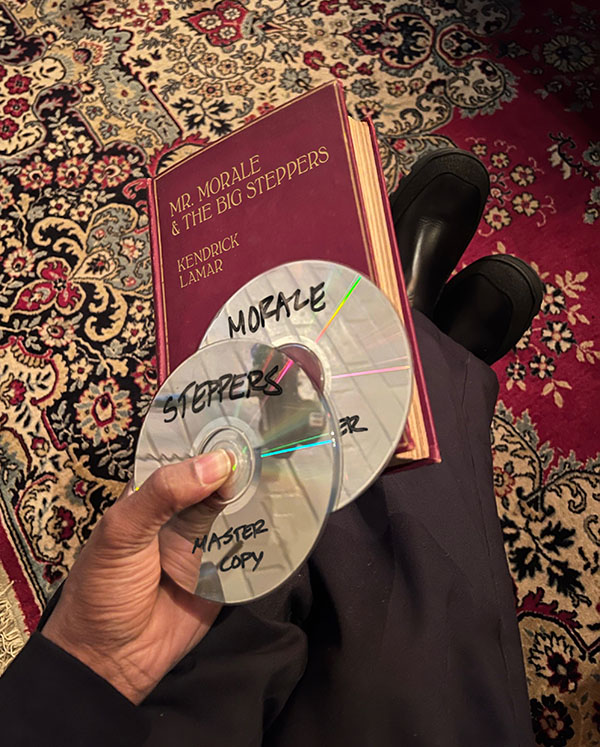Metro Boomin might just have churned out the best long-form hip-hop listening experience of 2023. No hyperbole. Thirteen individual cuts, spread across 47 minutes of impactful, unbridled, and envelope-pushing music—all without hinging on tired or predictable recruits such as Drake, The Kid LAROY, or Post Malone. Now a little over two months old, his Across the Spider-Verse (Soundtrack from and Inspired by the Motion Picture) radiates as such a convincing body of work that no other major drop has seemingly been able to top it hitherto (even though Travis Scott’s UTOPIA, albeit irreconcilably different, gets scarily close). Dare we say it, with this compilation, the American record producer, executive, and DJ has sequenced the most accomplished popular soundtrack since arguably Black Panther (2018). But then, he’s so plugged into the cultural zeitgeist that one would be hard-pressed to think of someone better suited to score the marvelous adventures of Miles Morales, constituent of all the righteous values and virtues they emanate.
Sonically, the tight collection of tracks offers both an aptly gelled and unified listening experience, as well as radio-friendly heavy rotation potential from nearly all numbers tracklisted. Believe it or not, this thing weaves one sticky, swaggerish, and memorable exploit after another; all without sacrificing artistic bravery and stylistic exploration (one shouldn’t forget this thing is supposed to be attached to a ginormous Hollywood blockbuster). Modern trap, conscious hip-hop, alt-R&B, neo-soul, and flat out bubblegum pop; they are all welcome and at home here. Even when at times the score dances with devilish accusations of getting phoned in formulaic and a tad one-dimensional—such as on “Danger” or “Silk and Cologne“—enough perspective and a particular appreciation for the motion picture are quick to dissipate such affronts. That is, for instance those two songs might work less efficiently as standalone singles, yet in the context of the whole album they sound just as indispensable and necessary as the other eleven.
Not to mention the deeper cuts on here. Through his flavorsome and balanced taste making on moments such as the exquisite slice of high brow alt pop on the James Blake-assisted “Hummingbird“, the forlorn standout “Calling“, or even the tenderly sweet Coi Leray vocal flex “Self Love“, the 29-year old Missourian sculpted an acoustic stream of consciousness more akin to, say, Frank Ocean‘s Blonde, than the first Various Artists-downgraded Into the Spider-Verse OST. And to think that for reasons allegedly unknown (yet just as easily guessed), the Boominati Worldwide founder had to do without the inclusion of poppy wind in sail of Dominic Fike‘s “Mona Lisa“—released this past 2nd June as lead single for the whole multimedia Across the Spider-Verse venture. Granted, the track was reportedly always set to only be thrown onto the compilation’s deluxe edition. Yet with the benefit of twenty-twenty hindsight, Metro’s herculean creative effort transpired as more focused and zero’ed in without it.
Speaking of deluxe editions, the record’s Disc 2 counts five additional tracks. They are all well and fun, but frankly, do nothing but further prove and solidify Young Metro’s editing capaciousness as an on-demand executive producer. Mind you, none of the bonus joints are bad in and of themselves—they’re all perfectly decent and enjoyable while they’re on. However, the thirteen minutes of extra material are of a cutting room floor affectation for a reason, and did not make the main tracklist’s cut for evident causes. That is not to say that they don’t possess virtues: “Ansiedades” beautifully elevates the dreamy pipes of Puerto Rican singer Mora, potentially introducing him to a limitless audience. With that being said, aside from showcasing the St Louis native’s knack for musical experimentation, the bottom line is that their clubby, vibe-based, electronic prevalence would’ve caused them to stick out like sore thumbs—cases in point, “Take It To The Top” and “Infamous“. That’s a shame and pity a savvy and tasteful curator such as Metro could not have allowed.
Lest we all forget, the Republic Records-earmarked Across the Spider-Verse (Soundtrack from and Inspired by the Motion Picture) stands as mainstream companion piece to the more canonical incidental tunes released under Spider-Man: Across the Spider-Verse (Original Score), orchestrated and arranged by English composer Daniel Pemberton. For once, the Universal Music Group’s USA imprint should get its due flowers for the formidable environmental enablement they were able to grant Metro and his ambitious multi-licensing roster vision. As many as sixteen official featured performing acts in total are present on display credit-level here. They range from budding new guard picks like Roisee, EI8HT, and Coi Larey, and journey all the way to bona fide elder rap statesmen such as A$AP Rocky, Future, and Lil Wayne. Oh, and did we mention managing to enlist critical swan song co-sign from none other than genre GOAT Nas?
Not unlike some of the key constituencies of African philosophy Ubuntu, with integrity, responsibility, empathy, and focus, Coach Metro has mastered a call up of a winning sample of carefully functional picks. His team tactics surgically constructed a court tapestry mastering both defense and offense, both below-the-rim paint points and long-range triples. If the earned trust from such a stacked A-list line up—as well as that he placed on them—does not go to prove that the producer born Leland Tyler Wayne doesn’t have the clout and creative vision to claim a marquee seat at the hip-hop conversation table, then virtually nothing else will. As the genre celebrates half a century of cultural impact, appropriations, and misunderstandings on this very day, its spiritual founders and forefathers can take a wealth of comfort from the notion that its future-proofing keys are in safe and capable hands. Now go watch the film. Then re-watch it. More importantly, listen to Young Metro’s synchronized masterpiece, we might need to await another five years for such a good movie soundtrack.
We’d like to thank you sincerely for taking the time to read this and we hope to feel your interest again next time. And happy birthday to hip-hop this time around.
AV














